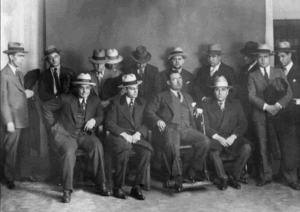The history of the Mafia and Williamsburg, Brooklyn are itntertwined. Many of the city’s legendary mafiosi called the area home and many of the crime families had a presence there. This tour will trace the roots of the mafia in the area. We will visit sites related to the Castelamarese War, whose outcome led to the establishment of the commission and the five families. We will visit the sites of homes of two legendary mafiosi as well as restaurants related to the Bonnanos, Colombos and Gambinos. We will see where the first “mafia kiss” was made as well as the site of a club visited by Al Capone. We will also visit site of the former “Motion Lounge” which figures in the film Donny Brasco.

